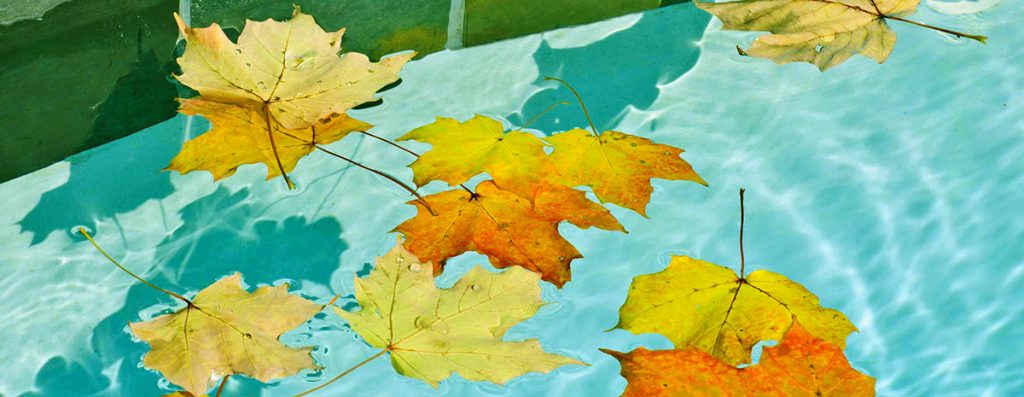Autumn is Coming, Here’s 10 Tips To Keep Your Pool Area Well Kept
Raking up leaves around the garden has a certain charm. However, when it concerns pools, no-one likes scooping soggy dead leaves out of the pool on a chilly autumn day, it’s easy – and dangerous – to ignore them. Not only will the backyard become a no-go zone because of the brackish water-filled hole, there’ll be a ton more work and probably a higher cost involved, when summer rolls around again.

It’s important to protect your investment and don’t let your pool “go to sleep” over autumn and winter. And with the unseasonal, unpredictable weather we have been experiencing of late, you may even be able to take a dive so it’s ideal to have your pool “swim ready” for that last minute recreational time at the pool. Windy and stormy weather can also blow leaves and dirt into the pool which, if left to settle, can become difficult to remove.
Here’s 10 tips to keep your pool well maintained during the autumn!
1. Balance the water
The pool’s pH level needs to be between 7.2 and 7.6. If the level is not correct, this might be trouble for your pool health. Seek the proper professionals to know what is the best treatment, depending on the pH you’ve got to bring your pool to the best level.
2. Clean the pool
It’s important to brush the walls and floor of the pool and then to vacuum the whole pool thoroughly. Algae thrives in unclean water, so don’t forget to clean the skimmer baskets and the pump’s lint basket of debris
3. Clean the filter
Ensure that the pool’s filter is sparkling clean, as any grease or oil deposits will harden over winter and make the filter harder to clean in the warmer months, not to mention reduce its overall efficiency.
4. Use a shock treatment
It’s recommended to use a regular shock treatment throughout winter. Once you’ve added the shock treatment appropriate for your pool, run both the pump and filter for several hours to ensure it has been well distributed throughout the water.
5. Protect against algae
Use an algaecide that’s appropriate for your pool. The addition of pool algaecide will enhance and prolong the effectiveness of the chlorine and can act as a valuable backup to the anti-algae effects of regular chlorination.
6. Check chlorine levels
To keep your pool clean and clear, it’s important to keep your pool’s free available chlorine levels at a constant level of 2-3 PPM (parts per million) at all times during winter. If you’re using a salt chlorinator and a pool blanket, remember to reduce the output of the chlorinator to 1-2 PPM, as pool blankets trap chemicals and chlorine, and can cause high chlorine levels to occur, resulting in damage to pool equipment if not monitored carefully.
7. Maintain the pH and Total Alkalinity levels
Total Alkalinity (the measure of the ability of your pool or spa water to resist changes in the pH) is the overseer that keeps the pH of your water where it needs to be. If your buffering capabilities are too low (i.e. low alkalinity), your pH levels can swing drastically from highs to lows.
8. Run the filter
The pool’s filter should operate for three to four hours each day. If you’re using a timer, adjust it to suit. Remember if you switch the filter on during off-peak periods, you can save money.
9. Cover the pool
This will prevent water loss and also stop debris from entering the pool. Ensure you have a good quality pool blanket or cover.
10. Keep up your maintenance schedule
Once you’ve completed your preparation for winter, it’s imperative that you stick to a maintenance schedule, even though it’s cold and the pool is not being used. Once a week it’s important to do a quick visual inspection of your pool and make sure all of your equipment is working properly. Also check the water level, empty the skimmer basket and check your chlorine and pH levels.




